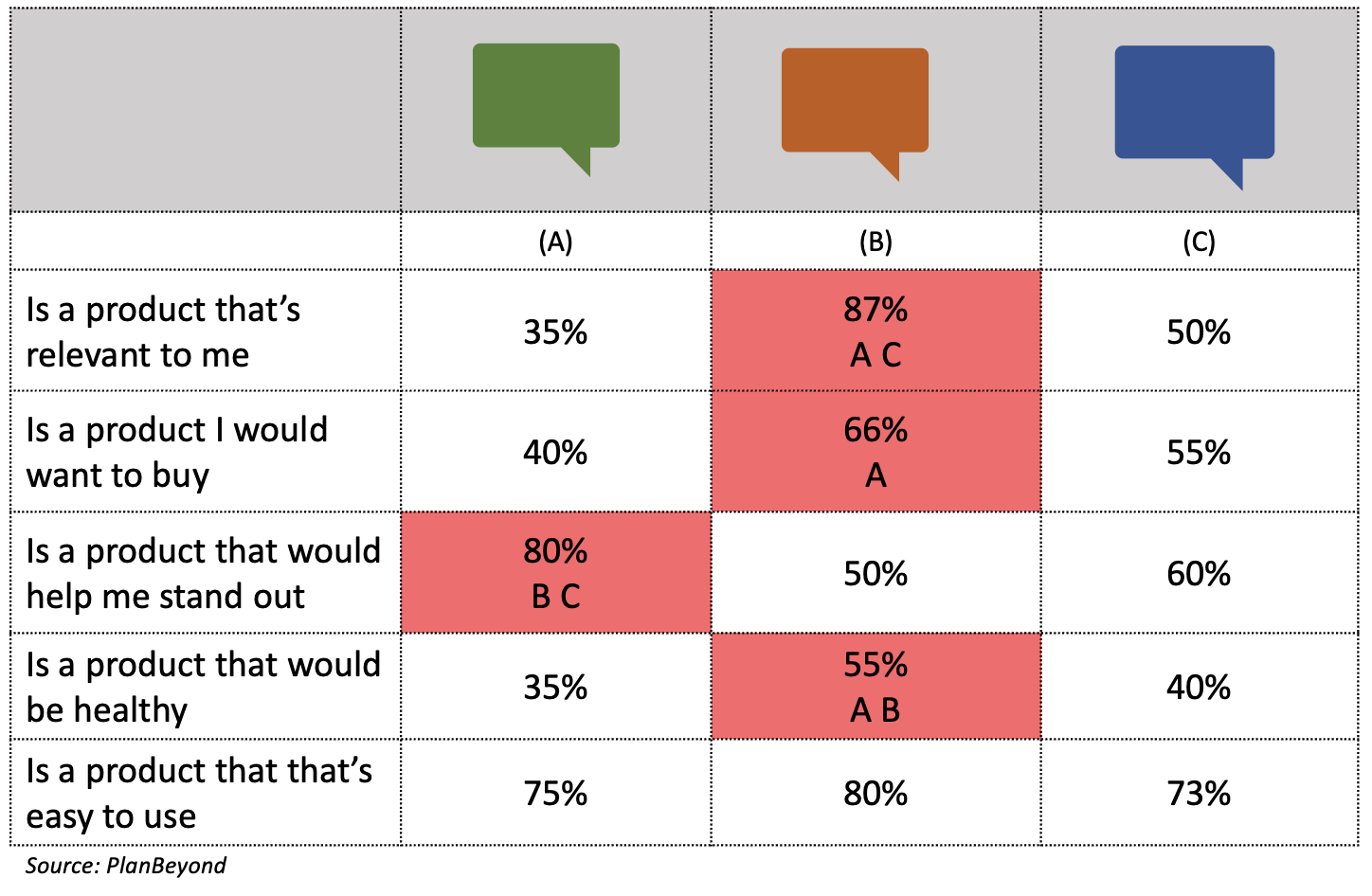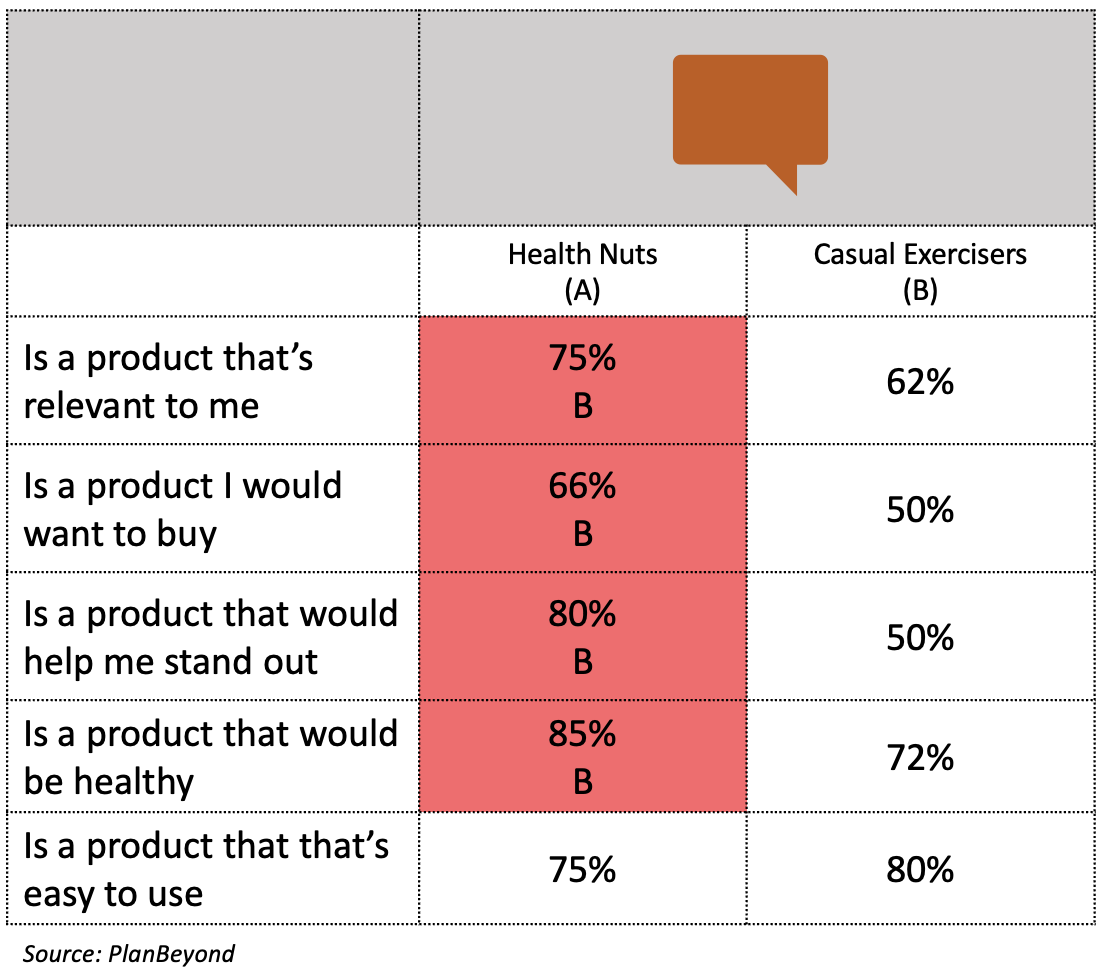Brand positioning helps build great brands. It’s a foundational branding element that helps communicate to customers a product’s value, how it will make them feel, and why it’s right for them. When executed correctly, it gives a brand that je ne sais quoi that compels you to buy.
However, landing on the right components that make for great positioning is no easy feat. This is where a little research work comes in.
Brand positioning research identifies the unique ideas, value propositions, and benefits that excite customers. By isolating the right mixing and matching of these elements, this research method vastly improves marketing resonance, go-to-market success, and customer acquisition.
What Is A Brand Positioning Statement
A brand positioning statement describes who you are as a brand or company, the product or service you offer, who your core customer is, and why they want to buy you. Philip Kotler, credited as the father of modern marketing, developed the following brand positioning statement definition:
“The act of designing the company’s offering and image to occupy a distinctive place in the mind of the target market.â€
This definition is helpful for a couple of reasons. For starters, it explicitly calls out the need to target a specific customer. You can’t be everything to everyone! Secondly, it shows how you must create a distinct picture in customers’ minds about what you stand for.
Brand Positioning Statement Examples
To illustrate this, let’s look at a few positioning statements.
Disney: For the young and young-at-heart, Walt Disney World is the theme park that best delivers on an immersive and magical experience because Walt Disney World, and only Walt Disney World, connects you to the characters and worlds you most desire.
Amazon: For consumers who want to purchase a wide range of products online with quick delivery, Amazon provides a one-stop online shopping site. Amazon sets itself apart from other online retailers with its customer obsession, passion for innovation, and commitment to operational excellence.
You’ll see some consistencies across these statements. They distinctly say who their target customer is, what their target customer wants, and how the brand delivers on that service.
Developing Brand Positioning Statements
It likely goes without saying that you can’t do brand positioning research without first having brand positioning statements. Keep in mind the two points below when crafting your statements.
1. Identify Key Differentiators & Values
What do you think differentiates your product? What value does your product offer customers? Brainstorm answers to these questions to start developing your potential statements
If time and resources permit, consider performing 1:1 interviews or focus groups in advance. Hearing feedback in customers’ own voices provides guidance on what options to consider and how to talk about them.
2. Create Unique Statements
When developing brand positioning statements for testing, make sure the statements really stand apart. Avoid slight variations that make it challenging for respondents to see the differences.
Let’s look at the two approaches below to see this in action. While not quite brand positioning statements, they illustrate how to think through creating truly different approaches.
Bad Approach
- Enjoy the taste you love, but at half the calories. In a recent head-to-head test, our product was preferred 2 to 1 against the market leader.
- Enjoy the taste you love, but at one-third the calories. In a recent head-to-head test, our product was preferred 2 to 1 against the market leader.
Good Approach
- Same taste, less filling. Our new product packs a tasty punch but lets you keep on munching for hours…with zero guilt.
- Enjoy the taste you love, but at half the calories. In a recent head-to-head test, our product was preferred 2 to 1 against the market leader.
How To Structure Brand Positioning Research
The process for performing brand positioning research follows a straightforward pattern.
- Finalize Statements: Develop and finalize 2, 3, 4, or more positioning statements. More statements means more respondents and therefore more budget. As a result, you’ll want to be careful to not test too many statements.
- Recruit Your Target Respondent: Make sure only people who meet your prospective customer target see your statements. Failing to do see means you’ll have irrelevant people evaluating your statements, making for poor results.
- Show One Statement Per Respondent: We like taking a monadic approach to brand positioning research. This is a research term that means respondents only see one statement. It helps retain respondent attention and minimize survey fatigue.
- Ask Questions To Gauge Statement Appeal: Once respondents see a particular statement, ask them to measure it on a variety of dimensions. This will let you evaluate how well each statement evokes certain feelings or attitudes.
This entire process is generally done online with a digital survey. It helps streamline respondent recruitment and collect large amounts of data quickly.
Analyzing Brand Positioning Research Data
Once the data is in, it’s time to look at how each brand positioning statement performed.
We placed fake data to the right to serve as an example. Each column represents a unique positioning statement. Meanwhile, each row shows how respondents rated the positioning based on unique values statements.
By comparing and contrasting ratings across each statement, we see Positioning A stands apart for purchase intent and relevance. In contrast, Positioning B would help customers stand apart from the crowed. However, this is a case where standing apart does not seem to positively impact purchase intent.
Also, don’t forget to notice those little letters below each number. This tells us when differences across positioning statements are statistically significant. That is, it tells us that we can be confident that the data is truly different across statement; The differences are not the result of sampling errors.


Assess How Unique Groups Respond to Each Positioning Statement
Another thing to do is look at the results by unique segments. For instance, let’s say we intentionally want to target physically fit, health-conscious customers. We’ll want to look at how this group of respondents compare to their counterparts.
The example at the right helps us illustrate this. We isolate the people who saw Positioning B. We then split them into our two unique segments. Once we do, we see that Positioning B carriers very strong results among our “Health Nut” segment. If this is the customer we want, Positioning B may be the way to go.






